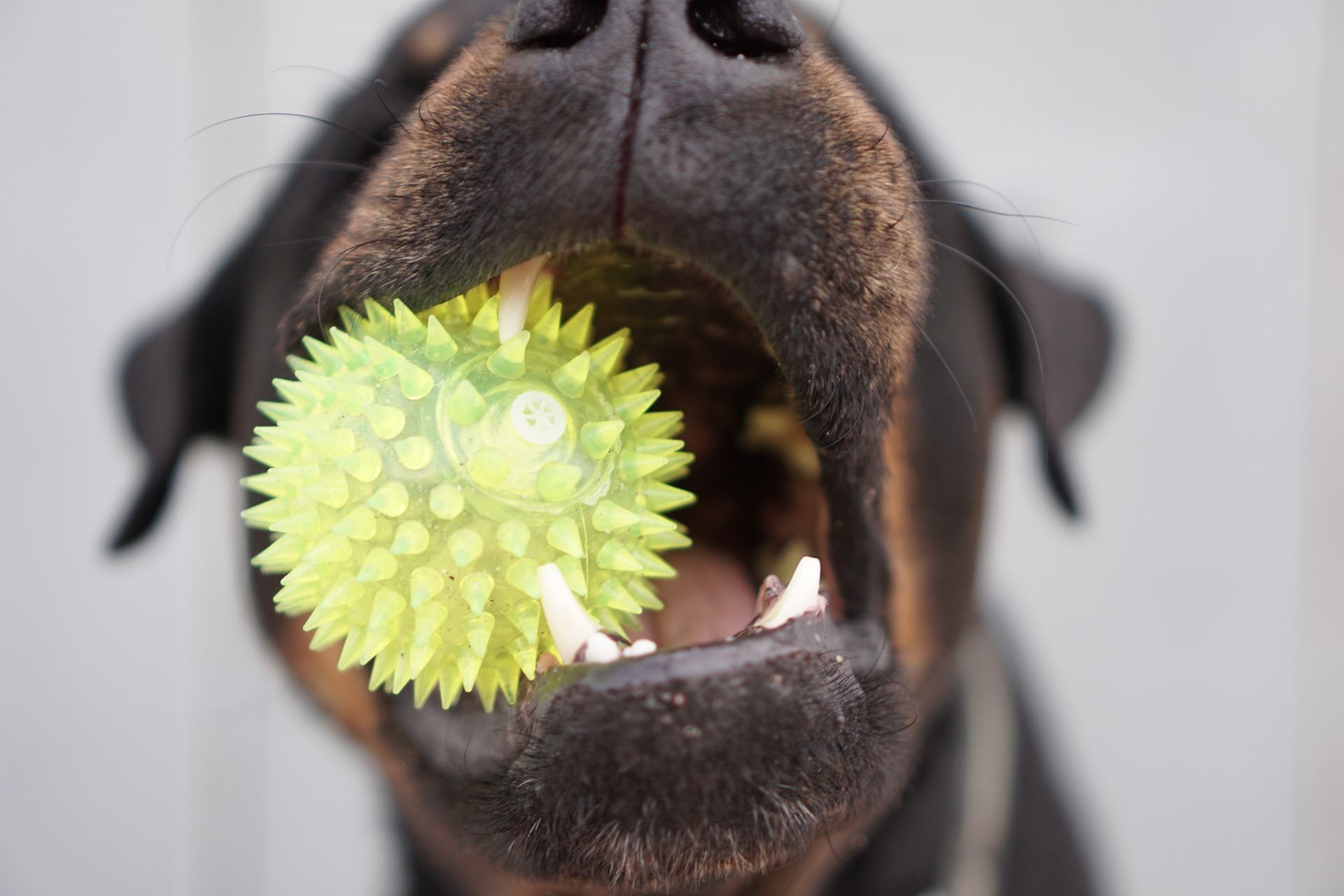Even though training can be a close bonding experience for owner and dog alike, many dog owners don’t enjoy going over training steps repeatedly and hoping the trick sticks. While we hope our blogs give detailed instructions to simplify the training process at home, we understand that not everyone can dedicate time to training on top of their other responsibilities after a long work day. Luckily, dog owners can incorporate elements of training during playtime that help stimulate their dog’s mind and release pent-up energy. Today, we will discuss how dog toys are more than meets the eye and which ones are perfect to introduce to your pet.
How Dog Toys Can Assist With Training
While some dog toys help with specific types of tricks and training (which we will soon touch on), dog toys also have general benefits that apply to all scenarios.
But first, what type of toys are we talking about?
- Chewable toys allow your dog to gnaw away safely and keep them away from your furniture and curtains. Similar to bones, chewable toys also help keep your dog’s teeth healthy and act as a way for them to expel excess energy.
- Tug toys work similarly, but allow for greater physical exertion while your dog gnaws, chews, and tugs on their favorite toy.
- Balls and fetchable toys excite most dogs and naturally introduce the training techniques of retrieval and ‘drop it’ to dogs without them noticing that training is even occurring.
- While not always classified as a toy, slow treat dispensers act as fantastic mental stimulation for dogs as they try to figure out how to access the treats in clever and unique ways.
If you include all types of toys when interacting with your dog, they will surely pick up on huge benefits.
Training is often hard when dogs are overly excited or want to be active, and many of these listed toy types provide organic ways for your pup to let loose and have fun. If you decide to start home training, ensuring your dog isn’t bouncing off the walls is a great first step. Additionally, any form of mental stimulation you introduce in the form of toys will assist in later training by improving your dog’s overall curiosity and problem-solving capabilities.
Using Toys As A Reward
Dog toys can passively introduce some training to your pet, but they also work just as well as a reward for a job well done. While most dogs are food-oriented and respond well to treats during training, some want nothing more than to play with their owner using their favorite toy. For people who had issues training their pet in the past or couldn’t find time to incorporate a separate training session into their busy schedule, using physical toys as a reward might be the perfect solution to try out.
Using toys as a training reward differs from how you would use them during playtime. To start, limit your dog’s access to their absolute favorite toys and only provide them during successful training. You should also keep their exposure limited; engage in a short 5 to 10-second play period after they successfully learn a trick or listen to a command, then stop the play. If you continue any longer, your dog is sure to forget what they are doing and become enraptured by the return of their favorite toy. Lastly, make sure your dog knows the relationship between the toy and the training. Just as you would if you were giving them a treat, mark their success with a verbal command or clicker to build a relationship in their mind.
If you are looking for a Sarasota or Bradenton dog training school to train your dog further, call Gulf Coast K9 Dog Training today to learn more.





